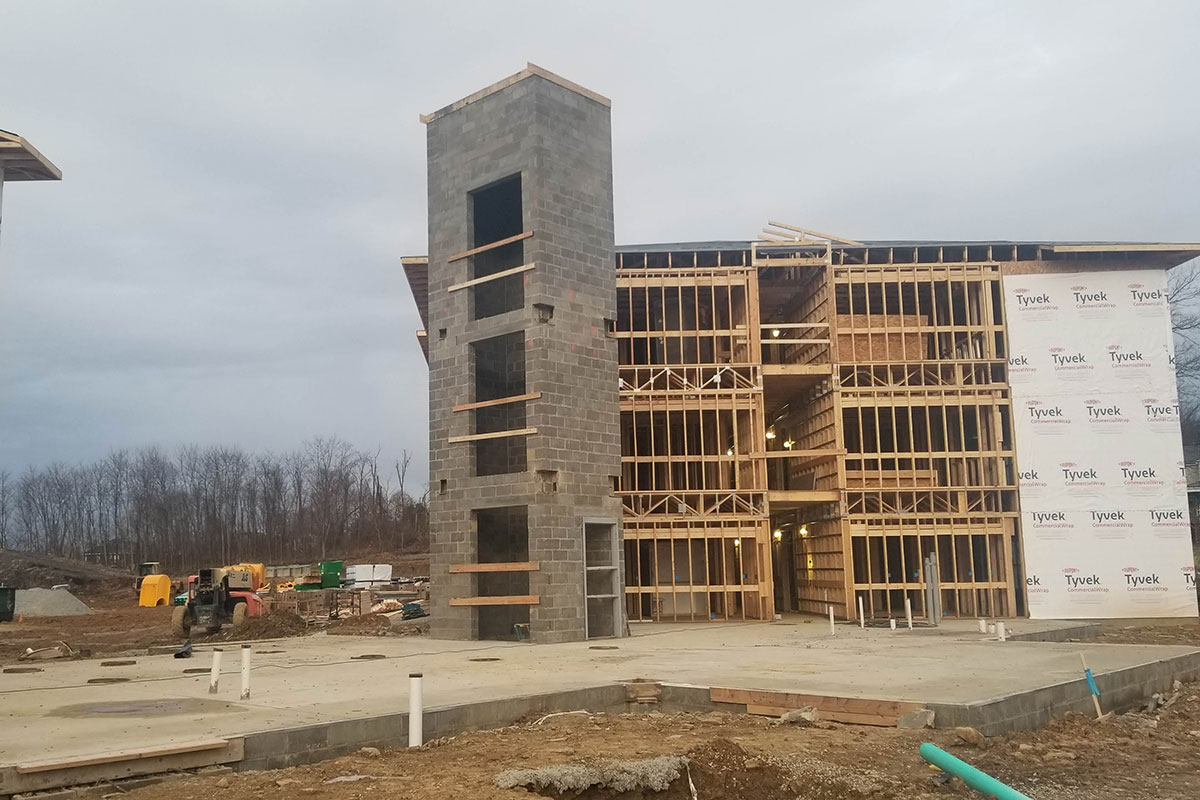
Assisted Living Construction Loans: Financing Your Vision
Assisted living facilities are very important for older people because they offer care and supportive services in a residential environment. Building these kinds of buildings costs a lot of money and often requires developers to get loans that are specifically designed to meet their needs. Loans are a good way to fund projects and help companies bring their ideas to life when they are building assisted living facilities.
How Assisted Living Construction Loans Work
Assisted living construction loans are a type of loan that is meant to help build senior living communities. Compared to debts for finished homes, construction loans pay for different stages of building, from buying land to finishing the building. Because the building process is so complicated, these loans usually have flexible terms and repayment plans.
Types of Assisted Living Construction Loans

Traditional Bank Loans
A bank loan can be used to pay for a project to build an assisted living facility. Most of the time, these loans have fixed terms and interest rates, and you may need to put up collateral to obtain the loan. Due to the industry nature, it is becoming harder to find approval from any conventional bank.
SBA Loans
The SBA offers loans for small businesses, like those in assisted living, to help them succeed. SBA loans offer favorable terms and may include guarantees that mitigate lender risk. The qualification process is very hard under SBA guidelines.
HUD Loans
The U.S. Department of Housing and Urban Development (HUD) has a number of loan programs to help affordable housing projects, such as those that build assisted living homes. A lot of the time, HUD loans have low interest rates and long terms for paying them back.
Private Loans
Private lenders, like business firms and real estate funds, offer other ways to get money for construction-assisted living facilities. It is faster to get these loans, and the standards for approving them are less strict. Most of the Borrowers prefer this option for acquisition and then refinance under SBA, FHA, or conventional loan after 1-2 years.
Government-backed Loans
The SBA and HUD both have loan programs for small businesses and homes that are backed by the government. That builder can use it to get money. Most of the time, the terms and interest rates on these loans are better than those on standard bank loans.
Private Equity Investors
Private equity investors who are ready to put money into assisted living projects are another way for developers to get money. These investors might give money in exchange for a piece of the project or a cut of the profits.
Real Estate Crowdfunding
Real estate crowdfunding sites are another way for developers to get money for their assisted living projects. Many people put in small amounts of money to pay for the project. This might be a good choice for builders who need to get money quickly and easily.
Non-profit Organizations
Developers might also be able to get money from non-profits that focus on funding projects for assisted living facilities. Developers who meet certain requirements may be able to get funds or loans with low interest rates from these groups. Like making sure seniors can afford to live somewhere.
Basically, companies can get money for their assisted living projects in many different ways. Through these different channels, developers can find the best way to get the money they need for their projects.
Process of Obtaining Assisted Living Construction Loans

There are a few steps you need to take to get a construction loan for an assisted living project:
Preparing a Business Plan: Developers need to make a detailed business plan that includes the project's goals, costs, and schedule.
Finding a Lender: Developers can ask about construction loan options at banks, credit unions, and specialist lenders.
Application Process and Documentation: People who want to borrow money have to send in loan applications along with supporting documents like financial records, construction plans, and permits.
Approval and Disbursement of Funds: Once the loan gets approved, it is given to the construction in parts, known as draws, as the project moves forward.
Factors Influencing Loan Approval
Several things affect whether or not assisted living construction loans are approved:
Financial Stability and Credit Reliability: To see if the developer can pay back the loan, lenders look at their credit history, debt-to-income ratio, and how stable the developer's finances are.
Market Research and Demand: Doing market research to show that people want assisted living can help you get a loan for the services.
Experience and Track Record: Developers who have built senior housing before are more likely to be able to get funding.
Benefits of Assisted Living Construction Loans
There are several benefits to assisted living construction loans:
Flexible Terms and Rates: Developers can talk about terms and interest rates that are best for their project.
Tailored Financing Options: You can get loans for different parts of a building, from getting land to finishing.
Support for Growth and Expansion: Once construction loans are used to fund projects that turn out well, they can open the door to more growth in the future.
Challenges and Risks Associated with Assisted Living Construction Loans

Even though construction loans are very important, developers have to deal with problems and risks that might come up.
Market Fluctuation: Changes in financial markets and in the population can affect the need for assisted living services.
Regulatory Compliance: There are rules about where and how builders can work, which can make the process more difficult.
Construction Delays and Cost Overruns: Unexpected delays or cost overruns can put a strain on a project's finances and make it take longer to pay back loans.
Tips for Success in Securing Assisted Living Construction Loans
To make it more likely that a loan will be approved, companies should:
Partner with Experienced Professionals: Lenders will be more likely to give you money if you work with experienced architects, contractors, and advisers.
Conduct Thorough Due Diligence: A thorough due diligence process that includes site surveys and possibility studies lowers risk and raises the project's chances of success.
Negotiate Favorable Terms: Developers should use their negotiating skills to get better loan terms and lower the cost of getting money.
Case Studies of Successful Assisted Living Projects
Grants for construction projects help the assisted living business grow by giving more money to new construction. Construction companies have been able to get the money. They need to build and grow assisted living facilities with these loans. This has made it easier for them to care for older people.
These changes have been helpful in making things safer financially and getting them done. There should be more good places for seniors to live. Construction loans have also given builders the freedom and tools they need to see their projects through to the end. In the long run, this has been good for both the business and the people who need help living on their own.
Getting construction loans is important for the growth and success of assisted living facilities. This shows how important they are to the whole business.
Future Outlook for Assisted Living Construction Loans
Loans for building assisted living facilities will be important for meeting the changing needs of seniors, as more of them need a place to live. Even though problems still exist, new ways of financing projects and strategic relationships can help developers get through the complicated construction process.
Conclusion
Assisted living construction loans are very important for people who want to build communities for seniors. By giving developers a range of financing choices, they can get the money they need. In order to make their plans for new care homes come true.
Building new hospitals, clinics, and nursing homes is one way to do this. Or other health care facilities that will offer good care to the local people.
With these loans, builders can start projects that might not have been possible before. Eventually causing more health care businesses to open in the area. This growth can help meet the rising need for healthcare services and make it easier for people to get care. And improve the level of care given overall.
FAQs (Frequently Asked Questions)
What is the typical duration of an assisted living construction loan?
Assisted living construction loans typically last 1-3 years, depending on the project and lender's needs.
Can startups or first-time developers qualify for construction loans?
While experience in the industry can bolster a borrower's credentials, startups and novice developers may still secure construction loans. By demonstrating a solid business plan, financial stability, and a clear vision for the project.
What do you need for a loan to build assisted living?
Lenders can ask for different types of collateral. This may involve the property under development, personal or business assets, and guarantees from stakeholders.
How are interest rates determined for construction loans?
Current market rates, the borrower's credit reliability, and project risk. Loan-to-value ratios are a few variables that affect interest rates for construction loans.
Are government-backed programs available for assisted living construction financing?
Yes, programs offered by entities like the U.S. Department of Housing and Urban Development (HUD). The Small Business Administration (SBA) provides support for assisted living construction through loan guarantees and subsidies.
Sam Haq, CEO
Commercial Lending USA
www.commerciallendingusa.com
0 Comments
Leave A Comment